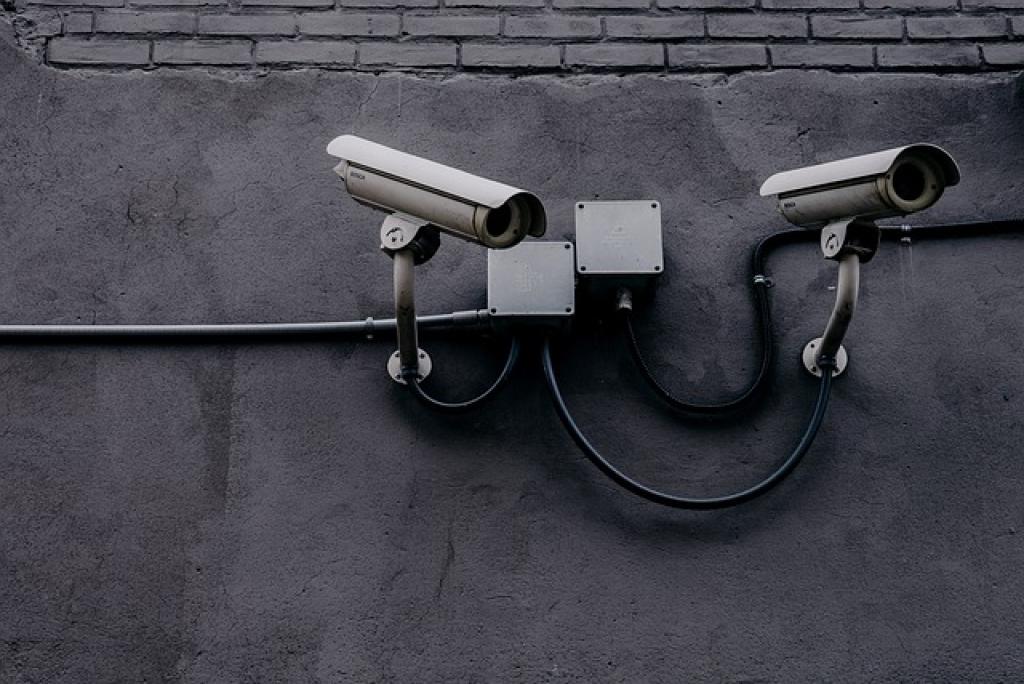
Ensure Data Security with Private Security Solutions for Data Centers and Tech Campuses
In our ever-evolving digital world, data is the cornerstone of business strategy and operations. But as reliance on data grows, so does the risk of cyber threats and data breaches. This makes securing data not just a technical challenge but a strategic imperative.
Private security solutions offer robust defenses to safeguard sensitive information within data centers and tech campuses. These tailored solutions are designed to meet the unique security needs of data-rich environments, ensuring that critical data remains out of unauthorized hands.
By employing state-of-the-art access controls, monitoring systems, and cybersecurity protocols, organizations can fortify their defenses against potential threats and disruptions. This blog post explores the importance of these security measures and how they can be effectively deployed to protect critical infrastructure and data assets.
Why Data Security is Critical for Data Centers and Tech Campuses
Data centers and tech campuses are the nerve centers of the digital economy, housing vast amounts of sensitive information that power everything from small businesses to global enterprises. These facilities are targets for cybercriminals seeking valuable data to exploit.
Security breaches can lead to massive financial losses, reputational damage, and regulatory penalties. The impact of a data breach extends beyond immediate costs; it can erode customer trust and undermine relationships that took years to build.
Moreover, tech campuses are innovation hubs, teeming with intellectual property and proprietary technologies. Protecting these assets from theft or espionage is vital to maintain a competitive edge in an industry where new advancements occur daily.
In this environment, it’s crucial to have robust security protocols that identify vulnerabilities before they can be exploited. By implementing comprehensive data security solutions, organizations can ensure the integrity, confidentiality, and availability of their data, keeping their operations running smoothly and securely.
Common Threats to Data Security in Modern Tech Environments
In today’s digital landscape, safeguarding data requires vigilance against a wide array of threats. Cyberattacks have become increasingly sophisticated, targeting vulnerabilities in networks and software systems.
One prevalent threat is ransomware, where attackers encrypt data and demand a ransom for its release. This threat can cripple operations, leading to significant downtime and financial loss.
Insider threats also pose a significant risk. Employees, whether malicious or negligent, can inadvertently expose sensitive data or facilitate unauthorized access. Training and strict access control are essential to mitigate these internal risks.
Phishing attacks continue to trick individuals into revealing confidential information. With these social engineering tactics becoming more refined, maintaining awareness and promoting security education is vital.
Emerging Challenges in Data Security
Additionally, the growing use of cloud services introduces vulnerabilities through misconfigured settings or inadequate security measures. As organizations embrace remote work, ensuring secure access to data becomes more complex but non-negotiable.
By understanding and anticipating these threats, tech environments can implement proactive measures, ensuring robust defenses and resilient operations. Protecting data integrity requires a comprehensive approach, continually adapting to the evolving threat landscape.
Benefits of Implementing Private Security Solutions
Integrating private security solutions into data centers and tech campuses offers a strategic advantage in protecting sensitive information. These solutions are designed to provide comprehensive protection tailored to the unique demands of high-tech environments.
One of the primary benefits is enhanced control over access to critical systems and data. Private security protocols ensure only authorized personnel can access sensitive areas, minimizing risks associated with unauthorized entry.
Another significant advantage is the ability to continuously monitor for potential threats. Advanced surveillance and real-time alert systems can detect unusual activities, allowing for prompt responses to neutralize threats before they escalate.
Private security solutions also streamline compliance with regulatory standards, ensuring that organizations meet industry-specific requirements. This not only avoids penalties but also reinforces trust among clients and stakeholders.
Furthermore, customized security solutions can be scaled to meet the growing needs of organizations, providing flexibility and room for growth. By investing in robust security measures, businesses can focus on innovation and expansion, knowing their data is well-protected. Implementing private security solutions fortifies operational integrity and fosters an environment of trust and safety.
Key Features to Look for in Data Security Solutions
Choosing the right data security solutions is crucial for maintaining a resilient defense strategy. It’s important to focus on key features that enhance functionality and protection.
Advanced Threat Detection
A top priority is advanced threat detection capabilities. Look for solutions that leverage artificial intelligence and machine learning to identify and respond to threats in real-time. These technologies provide an edge in detecting anomalies and potential breaches before they cause harm.
Robust encryption is another critical feature. Ensuring that data is encrypted both at rest and in transit prevents unauthorized access, even if data is intercepted. Strong encryption standards are essential for protecting sensitive information from prying eyes.
User access control is vital, allowing organizations to define and manage who can access various data levels. Solutions should offer multi-factor authentication and role-based access management to ensure that only authorized personnel can access sensitive information.
Integration and Scalability
Scalability and integration capabilities cannot be overlooked. Effective solutions should easily integrate with existing systems and scale with growing data needs, adapting to the changing requirements of the business.
Finding solutions with comprehensive reporting and analytics can greatly enhance visibility into security postures. Detailed reports help in assessing risks and making informed decisions to bolster defenses. By focusing on these key features, organizations can ensure robust, adaptable security for their digital assets.
Best Practices for Securing Data Centers and Tech Campuses
Securing data centers and tech campuses requires a strategic approach that incorporates best practices tailored to the unique challenges these environments face. Prioritizing physical and digital security is key to safeguarding sensitive information.
Rigorous Access Controls
Implement rigorous access controls to limit who can enter physical and digital spaces. Multi-factor authentication and biometric scans can provide additional layers of security. Secure entry and exit points with surveillance systems to monitor activities comprehensively.
Regular audits and assessments help maintain security integrity. Conduct periodic reviews of security measures to identify vulnerabilities and implement necessary upgrades. Staying proactive in evaluating your security posture prevents breaches before they occur.
Network security should not be neglected. Employ firewalls, intrusion detection systems, and regular network scans to prevent unauthorized access and espionage. An encapsulated defense strategy extends protection across all digital surfaces.
Employee training is essential in building a robust security culture. Ensure staff are aware of security protocols and the latest phishing tactics. Equipping employees with the knowledge to identify and report threats is crucial for an all-encompassing defense.
Lastly, develop and test incident response plans. Being prepared to respond swiftly to breaches reduces potential damage and recovery time. Following these best practices creates a secure environment, enabling confidence in the integrity of your data centers and tech campuses.
Cost-Effective Strategies to Enhance Data Security
Enhancing data security doesn’t always require a hefty budget. Implementing cost-effective strategies can significantly bolster defenses without straining resources.
Start with a comprehensive risk assessment to identify vulnerabilities and prioritize security measures. Understanding your risk landscape allows you to allocate resources more effectively, focusing on the most critical areas that require attention.
Leverage open-source security tools, which often provide robust protection competitively priced or for free. These tools can include firewalls, intrusion detection systems, and encryption software, offering essential services without incurring significant costs.
Regularly updating software and systems is a simple yet impactful strategy. Ensuring that all applications and systems have the latest security patches reduces exposure to known vulnerabilities.
Training employees is another cost-effective measure. By educating staff on identifying potential threats such as phishing scams, you can reduce the likelihood of breaches caused by human error. Security awareness doesn’t have to break the bank and can be integrated into routine team meetings.
Finally, consider a layered security approach, combining basic protective measures with more advanced ones. This creates a multi-faceted defense without needing to overhaul your entire security framework. By focusing on these strategic initiatives, organizations can achieve strong data security without excessive spending.
Ensuring Compliance with Data Security Regulations
Compliance with data security regulations is critical to protecting both your organization and its clients. Navigating these sometimes complex requirements can be challenging, but adhering to them is crucial for maintaining trust and avoiding penalties.
Start by familiarizing yourself with relevant regulations, such as GDPR, CCPA, or HIPAA, depending on the sectors and regions you operate in. Understanding the specific requirements and implications for your business is vital for compliance.
Developing a Compliance Framework
Establish a compliance framework to guide your security practices. This framework should outline policies and procedures aligned with regulatory standards. Regularly update your framework to reflect any changes in regulations, keeping your organization ahead of compliance challenges.
Employ data protection officers or specialists who understand the nuances of these regulations. Their expertise ensures your organization adheres to the legal requirements and can navigate the intricate compliance landscape.
Conduct regular audits to assess compliance status and identify areas for improvement. These evaluations can highlight non-compliance risks and provide insights for corrective actions, reinforcing your organization’s commitment to data security.
Finally, document all compliance efforts. Detailed records demonstrate your organization’s dedication to data protection, which can be beneficial during audits or regulatory reviews. By ensuring compliance with data security regulations, organizations not only protect their data but also foster greater confidence with customers and partners.
The Bottom Line: Achieving Comprehensive Data Security for Your Organization
In the digital age, ensuring the security of your data is paramount. With the right strategies and solutions, your organization can protect its most valuable asset—information—while fostering trust and maintaining compliance with regulations.
To start, comprehensively assess your current security posture. Use this insight to identify any weak points and prioritize action steps. From advanced threat detection systems to proper employee training, a multi-faceted approach to data security is essential.
Implementing private security solutions can be a game changer, providing tailored defenses that align with your organization’s specific needs. These solutions enable you to manage access, monitor threats, and ensure that sensitive data remains protected.
Furthermore, never underestimate the power of staying informed. Regularly updating your strategies and technology ensures that defenses remain robust against evolving threats. This proactive approach can help avert potential breaches before they impact your business.
Additionally, focus on building a culture of security within your organization. Employees who are informed and engaged around data security practices become frontline defenders against threats. Encourage this mindset through ongoing education and clear communication.
In the end, achieving comprehensive data security requires vigilance and adaptability. By integrating the strategies discussed and continually refining your approach, your organization can navigate the complexities of data protection with confidence. Thus, securing your digital assets is not just about safeguarding data—it’s about building a resilient future for your organization.


